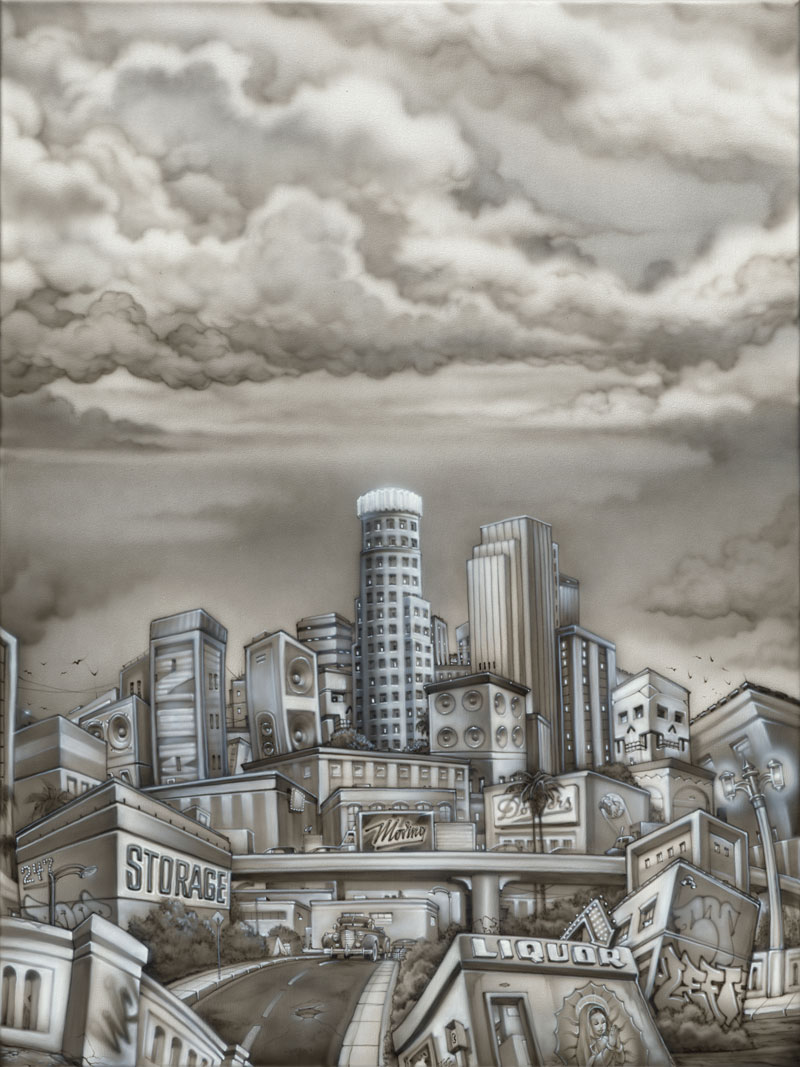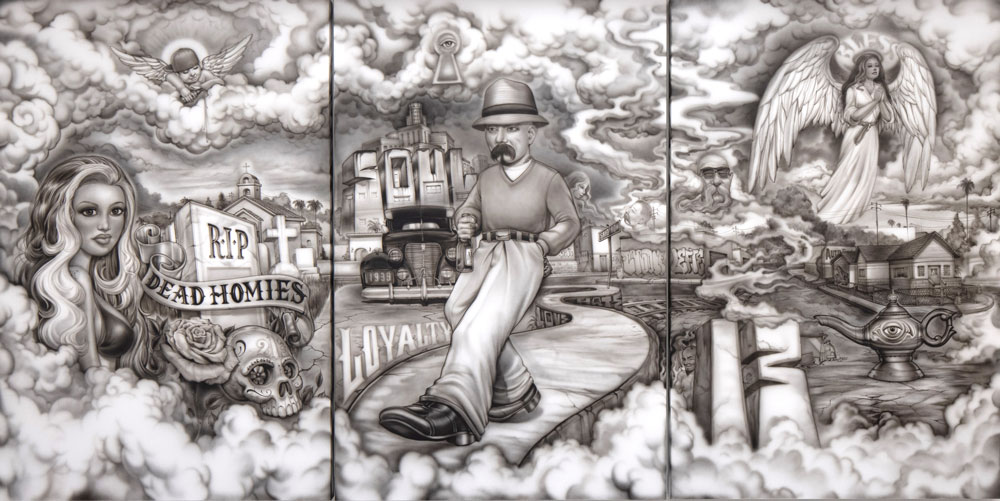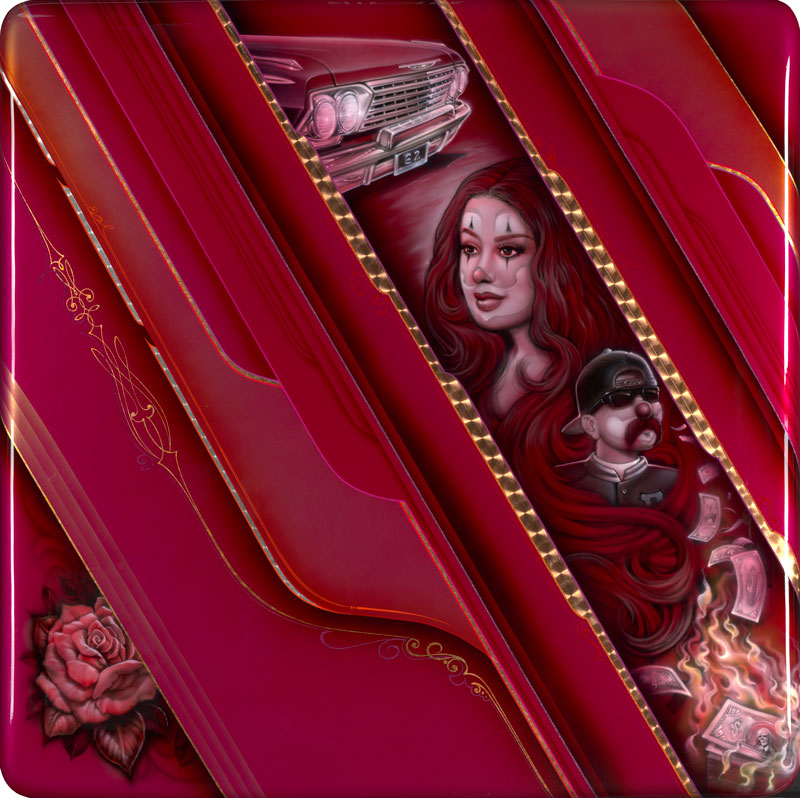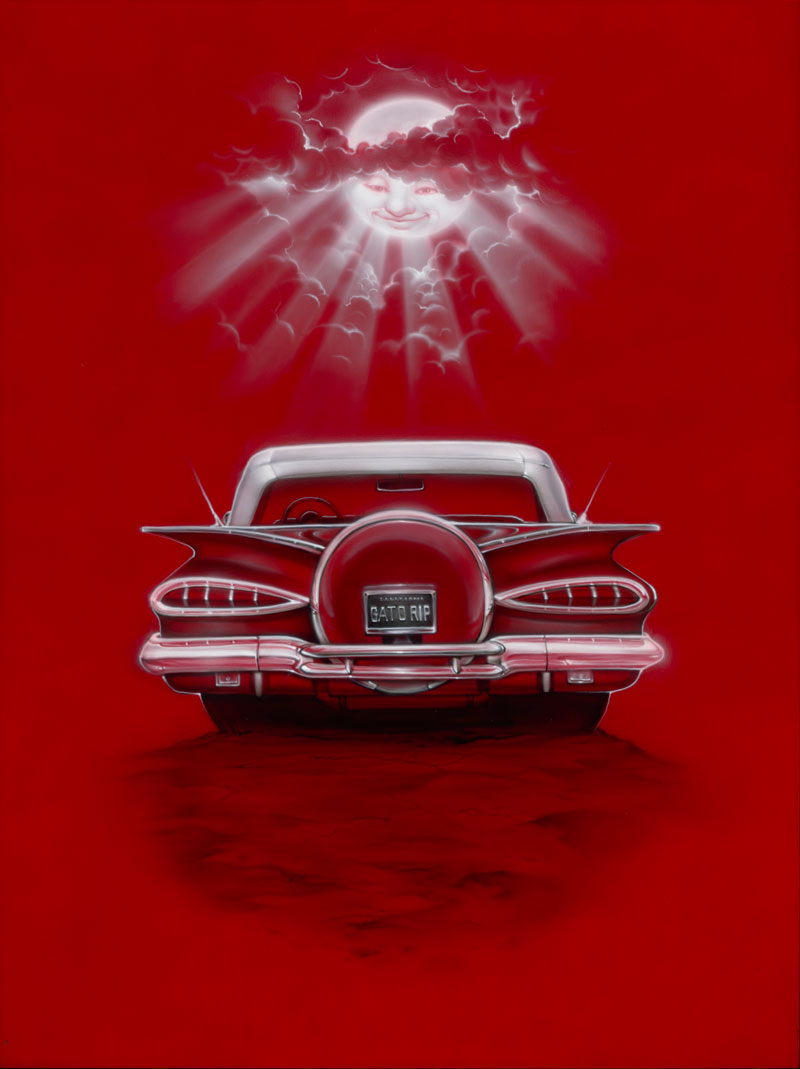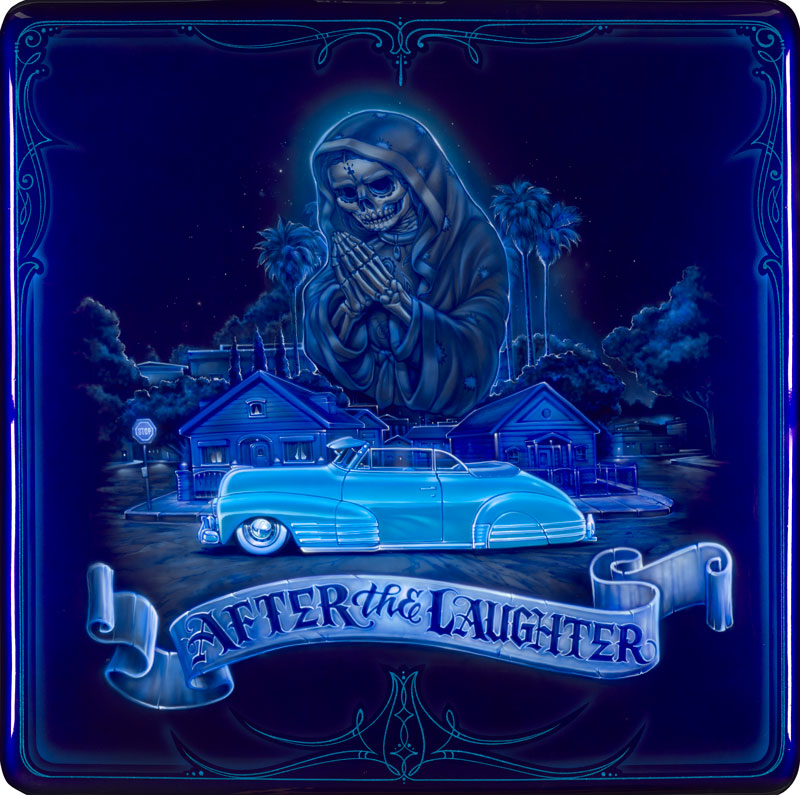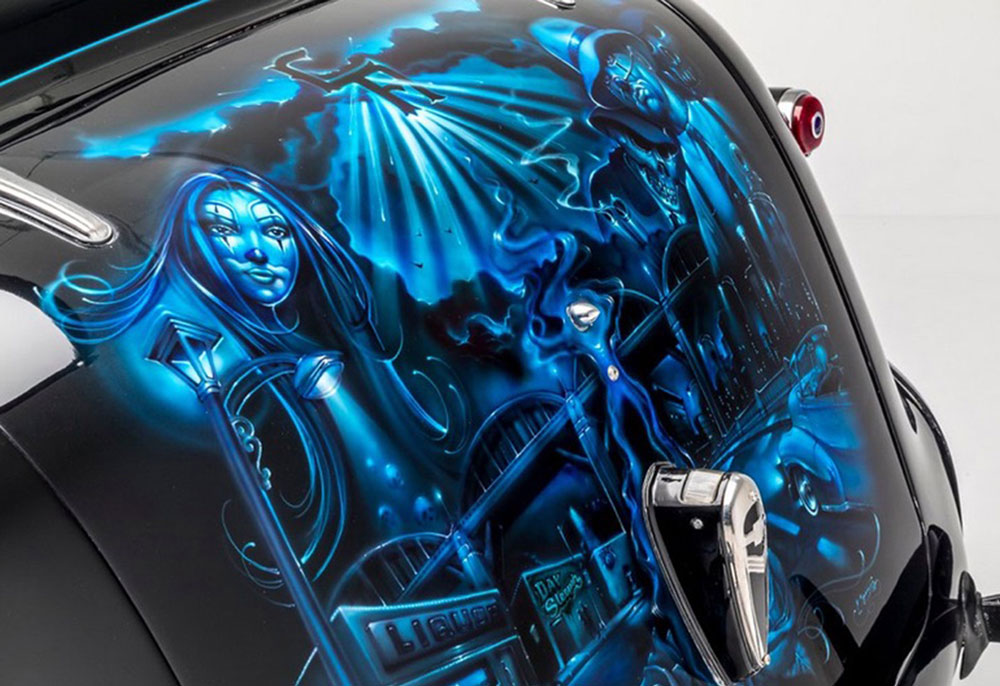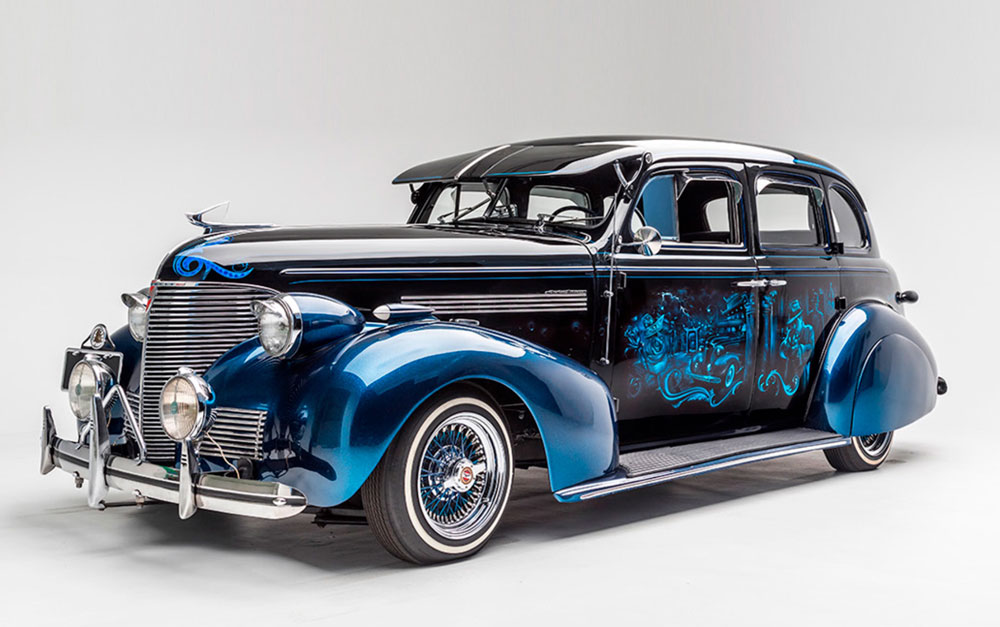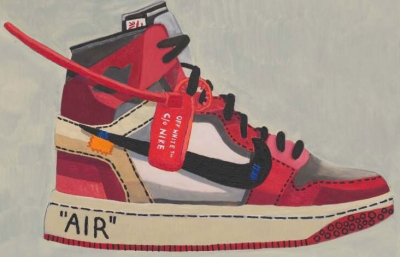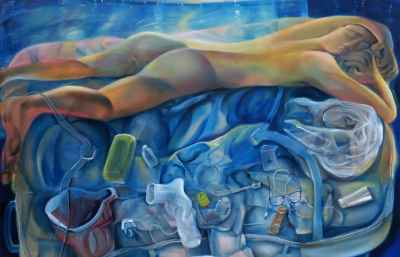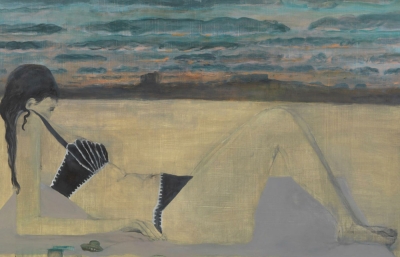There are 12 freeways that snake north to south, east to west in Los Angeles County. Unlike most places in the United States, they aren’t just known as numbers but almost like band names. It’s not Highway 5. It’s The 5. It’s not 405 Freeway, it's The 405. They are THE’s, not just concrete pathways. A cultural anthropologist would probably conclude, and quite rightly, we give highways such pronoun clarification because we develop almost human relationships with a freeway in LA. They are ingrained in the landscape, our psyche. When you need to get somewhere with purpose, they are crammed like sardines in a tin can. When they are wide open, they are like the poetic exemplifications of the freedom of movement, the beauty and machine power of the automobile, the peak of 20th century industrial ingenuity. Yes, there are highways and freeways around America, arguably 160,955 miles of cement, but the Dream of the Highway is Los Angeles. And there’s an art to this.
Mister CARTOON is many things to many people; a tattoo artist, a painter, a designer, a spokesperson, one of the great airbrush artists of his generation. He has taken a blue collar tool, whether that airbrush or tattoo gun, and created an almost surreal personification of street and highway culture of Los Angeles. The automobile, as a topic, as a canvas or inspiration, is inherent in American painting, an absolute backbone to the way we think of the vast land ahead of us. Showing an automobile in a painting is a way of demonstrating American wealth, ingenuity, inequality, labor, freedom, exceptionalism, nationalism, potential, failure, and perhaps most akin to CARTOON, individuality. There is weight to this.
Artists for decades have used the automobile as a surface or a subject. Ed Ruscha, Kerry James Marshall, Andy Warhol, Robert Williams, Jim Dine, to name a few, have used the car or the expansive freedom of the automobile. Even Jane Dickson has used the freeway overpasses of LA with a sense of quiet solitude, monoliths of the maze of life and the ability to amongst the modern urban backdrop. But none have quite used the car as a canvas itself and therefore transformed his canvas works into the theme of moving through LA quite like Mister CARTOON. His work is about the automobile as a status symbol, as a statement of intent, as an extension of individuality.
There are 2,276,974 cars in LA, most created in an industrial plant faraway within the framework of a particular design. We become part of a set ideal of design depending on what car we choose to drive. CARTOON exemplifies how one can take a limitation and turn it into a personality. He customizes, makes it his own. And that is what makes his first solo, Just My Imagination, opening at CONTROL Gallery and BEYOND THE STREETS, such a fascinating look into the famed tattoo and airbrush master’s fine art practice. He imagines an almost folkloric, fairy tale version of the customization world, of the car, of his own dreams as an artist. It’s taken something so utilitarian as the car and dreaming of a world where we can create an identity through that common purpose of driving on the highway.
“This is a fine art show from a blue-collar artist,” Mister CARTOON says. “I think of it that way because my entire goal was to be a sign painter. When I was a graffiti writer they told me I had to get a job, so I figured I would become a sign painter because a tattoo job wasn't available for me at that age. That's how I started. So if shit hit the fan, I could get a can of paint, a brush, and a candle, and I could go. That was my plan for real.”
There are 12 freeways that snake north to south, around 2,276,974 cars in LA. But there is only one Mister CARTOON. Like we say The 405, we can almost say The CARTOON and one understands. And in the pantheon of the great and historic artists who have used the automobile as a subject, he has turned it into a canvas itself and a dream. It’s a definition of imagination. —Evan Pricco



